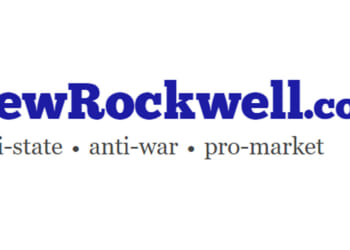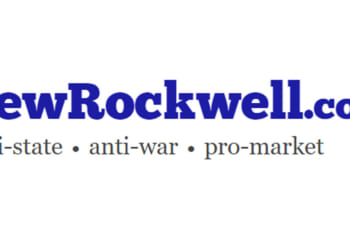“Patient power is dead,” a report that first appeared 43 months ago in the March/April 2022 issue of Capital Research magazine, presciently provided all the information needed to understand the just-concluded, longest federal government shutdown in American history.
But those who learned about the shutdown as it happened from America’s health care and political journalists are likely still confused. Regime media reliably mangles complex issues, with government shutdowns and health care being two of the worst examples. Mix them together and you have a perfect storm for misinformation.
In control of Congress and the White House back in 2021, Democrats passed a measure to hike Affordable Care Act subsides. As has been widely reported, Democrats were withholding support to reopen the government this fall because of their desire to continue those payments.
“Democrats say they won’t budge on their demand that Republicans support the higher federal subsidies they first passed in 2021, which hold down costs for people with ACA plans,” reported the Wall Street Journal in early October. [emphasis added]
It was a typical example of misleading coverage.
Back in September, the Congressional Budget Office informed lawmakers that extending the subsidies for another ten years will tack $350 billion onto the largest government debt ever racked up by any government in the history of governments. Mathematically astute observers have pointed out that health insurance firms are the real beneficiaries of these payments. Shelling out that $350 billion doesn’t “hold down costs” at all—for anyone.
What readers of CRC’s 2022 “Patient power” report know is that despite the name, health “insurance” isn’t really insurance. It’s a third-party payment system that puts government and insurance blobs in charge of most of the money, rather than the patients.
That makes health bureaucracies the customers, not us.
This runs contrary to how we became the richest society in the history of Earth. In most things, American customers have spending power over what they need and desire. Even the large New Deal and Great Society programs, such as food stamps and Social Security, put the cash directly into the accounts of the people making the purchases.
But with health care, we give government and government-aligned insurance firms control over our spending power. In 1960, before we made most of these mistakes, health care accounted for 5 percent of our GDP. It is now nearly 18 percent.
It doesn’t need to be this way, as CRC’s “Patient power” report explained way back in 2022:
On July 19, 2017, at least 155 demonstrators were arrested by U.S. Capitol police for creating a coordinated disturbance at U.S. Senate office buildings. The scofflaw infiltration was in response to planning by lawmakers to repeal and replace the Affordable Care Act (i.e., Obamacare). The Washington Post reported the protesters had hoped to “have more than 500 people occupy offices of 52 Republicans.”
This acrimony occurred because an astounding amount of wealth and power is at stake. The United States currently spends $11,600 per person each year on health care. That adds up to well over $900,000 during the average lifetime of 79 years.
Both before and after Obamacare, most of that cash was controlled by big insurance companies and big government. The Affordable Care Act (ACA) didn’t so much change our costly third-party payment system as cram millions more people into it.
Excluding 64 million Medicare beneficiaries, the federal government alone spends more than $750 billion per year on health care, all of it tax dollars taken from Americans whom the government programs are supposed to help. Even setting aside several hundred million dollars more chipped in by state governments every year for their share of Medicaid spending, just the federal spending on health care comes to more than $2,700 per person each year.
That’s $10,800 in taxpayer health spending every year for every family of four. Who should control that money if not big government and big insurance bureaucrats?
On one side are the advocates of finishing the job and creating a full single-payer “Medicare for All” program in which government controls almost all health spending.
The opposing camp would empower patients with a much larger share of the control over government health dollars. In 2008, GOP presidential nominee Sen. John McCain (R-AZ) proposed dividing up a big chunk of the government health dollars into vouchers (known as a refundable tax credits) of $2,500 per person and $5,000 per family ($3,300 and $6,600 in late 2021 dollars, respectively).
These vouchers would have gone to everyone, providing universal health coverage. But it would have been the opposite of single payer because it would have empowered every adult and family to decide for themselves the level of health coverage to purchase and what to pay for out of pocket. Think of it as “multi-million-payer,” the payment system Americans use for most everything else.
A system biased heavily to patient control over spending has been in place in Singapore for decades. The average resident of Singapore is just as wealthy as an American, but the Singapore citizen spends one-third of what we do on health care to get results as good or better than ours. In 2013 the Brookings Institution issued a report on the Singapore program: Affordable Excellence: The Singapore Healthcare Story. In 2019 Newsweek ranked Singapore General Hospital as the third-best hospital on the planet.
The purpose of that 2022 report was to survey the NGOs that were promoting the Affordable Care Act rather than patient-powered reforms. An online version of the report, broken up into seven sections, is provided below.
Patient Power Is Dead: A Tour of the Left’s Advocacy for Government Control of Health Care Dollars (full series)
Big Labor and Medicare for All
Arabella’s Secretive 2018 Election Projects















